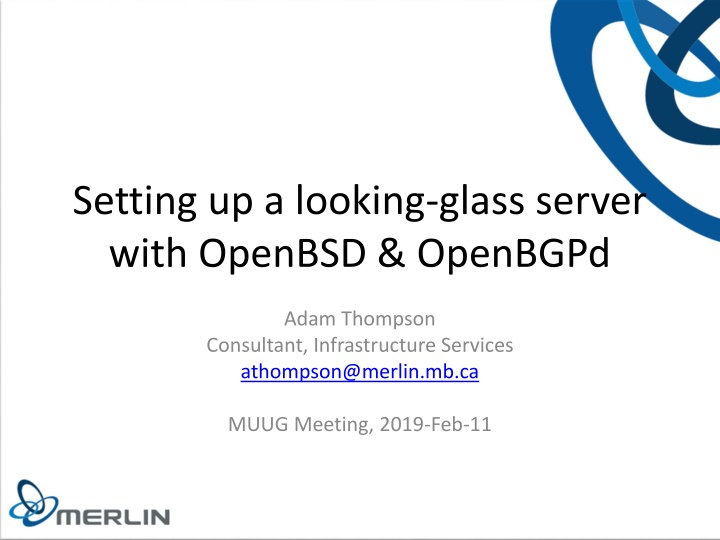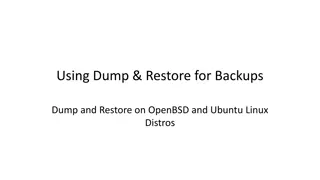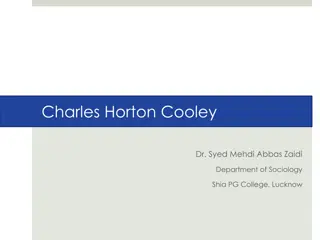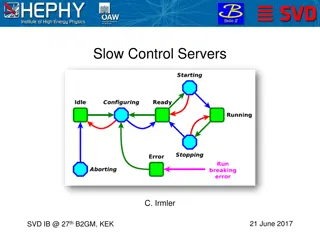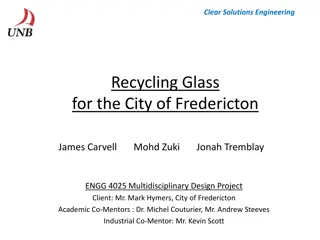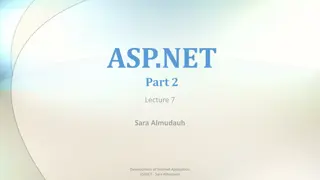Setting up a looking-glass server with OpenBSD & OpenBGPd
Learn how to set up a looking-glass server with OpenBSD & OpenBGPd following a guide by Adam Thompson. This tutorial covers the process in detail, providing valuable insights into building and configuring this essential infrastructure component.
Download Presentation

Please find below an Image/Link to download the presentation.
The content on the website is provided AS IS for your information and personal use only. It may not be sold, licensed, or shared on other websites without obtaining consent from the author.If you encounter any issues during the download, it is possible that the publisher has removed the file from their server.
You are allowed to download the files provided on this website for personal or commercial use, subject to the condition that they are used lawfully. All files are the property of their respective owners.
The content on the website is provided AS IS for your information and personal use only. It may not be sold, licensed, or shared on other websites without obtaining consent from the author.
E N D
Presentation Transcript
Setting up a looking-glass server with OpenBSD & OpenBGPd Adam Thompson Consultant, Infrastructure Services athompson@merlin.mb.ca MUUG Meeting, 2019-Feb-11
VM creation Running in VMware vSphere 6.x Using HTML5 or Flash wizards to create the VM Minimal resources required
Note: VMware does not specifically support OpenBSD, so we pick something close 64-bit FreeBSD, in this case. This affects a number of compatibility options in the VM in subtle ways.
Here we have to make some changes: HDD from SCSI0:0 to IDE0:0 delete the SCSI controller NIC type to VMXNET2 (to avoid a bug with VMXNET3) pick the correct VLAN CDROM to IDE1:0 attach the OpenBSD-netinstall64.iso image Video card to Auto-detect (on VM Options tab) force BIOS Setup
Power on the VM BIOS setup screen will appear automatically this one time, because the checkbox in VM Options is a one-shot setting. Change anything you need to in the BIOS Typically boot order
OpenBSD Boot screen will automatically continue after 5sec if no key is pressed
Installation steps Choose I for install Keep the default keyboard layout provide the short (unqualified) hostname choose the vic(4) device (it s the default) enter an IPv4 address with netmask enter an IPv6 address with netmask enter for done enter the IPv4 gateway enter the domain name enter the DNS nameservers enter the root password add a regular user (not shown) provide full name for user
Installation steps (contd) enter the password for that user decide whether root can login via SSH or not (hint: do not pick yes ) select the correct timezone pick whole disk select custom layout Default partition scheme is OK for some purposes, but partly obsolete in a VM where disks can be expanded. Default partition scheme still offers some nice features, make sure you understand why it exists before discarding it.
Installation steps (contd) add an a slice, filling the whole disk, mounted at / no swap! shouldn t need it on this server
Installation steps (contd) quit the partition editor wait for formatting to finish select http skip the proxy unless you need one, in which case my condolences provide the server name muug.ca accept the default path your MUUG mirror managers know their stuff press Enter again to confirm the defaults
Installation steps (contd) wait for installation to complete reboot
OS Configuration Login as root on the console or SSH in as the user you created, and use su - to become root run syspatch(8) to update the kernel reboot immediately
OS Configuration edit /etc/ntpd.conf to disable the sometimes-buggy VMware time sensor add local timeservers instead
OS Configuration edit or create /etc/rc.conf.local to change default start/stop options like using sysconfig in RHEL
OS Configuration Copy example configuration files
OS Configuration Add vim before using vi(1) drives me crazy
HTTPD configuration edit httpd to be HTTP-only (no TLS) just enough for our Letsencrypt cert to get created
TLS Cert creation Edit the acme-client.conf file to use our public hostname and the STAGING server
Letsencrypt cert creation make sure the webserver is running rcctl start httpd run acme-client -DA if everything is setup correctly, you wind up with an SSL cert that you can t use
Letsencrypt cert creation edit /etc/acme-client.conf switch to the production Letsencrypt server re-run acme-client -DA edit httpd.conf use the SSL cert we just got restart httpd(8) rcctl restart httpd
Letsencrypt cert creation add a cron entry to keep the cert up to date
bgplg(8) configuration Per the bgplg(8) manpage chmod some files create some directories copy some files
bgplg(8) configuration still following the bgplg(8) manpage: add some lines to httpd.conf(5) reload httpd(8)
After much troubleshooting, remove the first (global) fastcgi directive in httpd.conf, and now things mostly work oops.
bgpd configuration use bgpctl show to confirm all your sessions are up and running
bgplg(8) configuration /var/www/conf/bgplg.{css,head,foot} lastly, edit the customization files:
further httpd.conf customization If you want to redirect any and all visitors to the looking glass, add these two stanzas to the bottom of your httpd.conf. The first block allows browsers to retrieve the images (under /htdocs, because we re already chrooted to /var/www by default) and then for every single other path, redirect to the CGI.
Done! Any questions?
